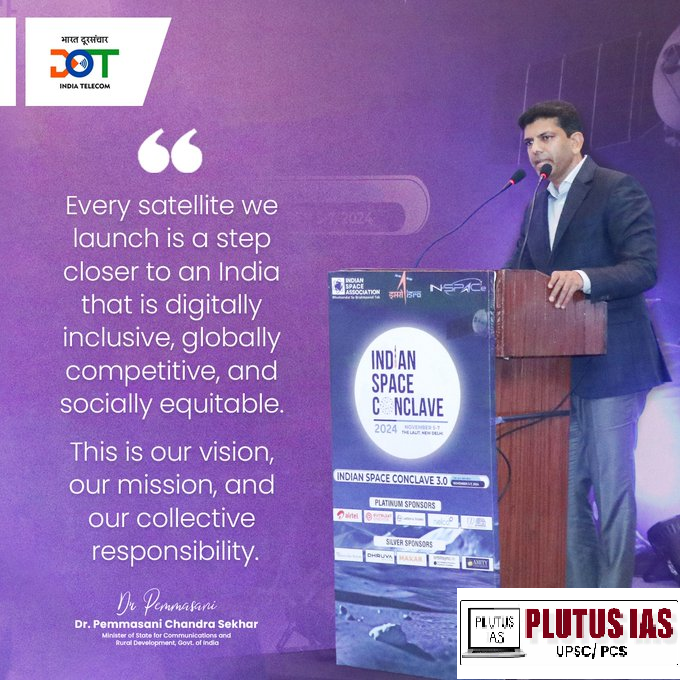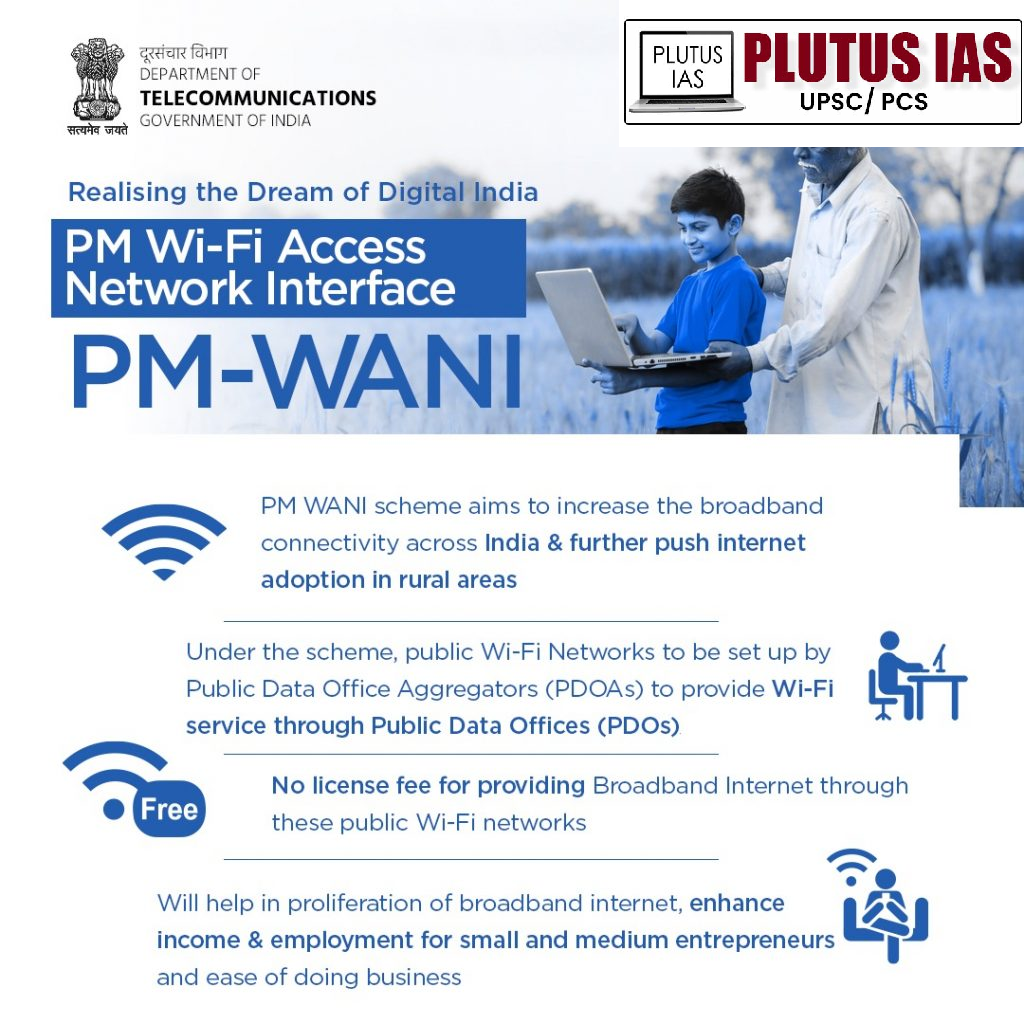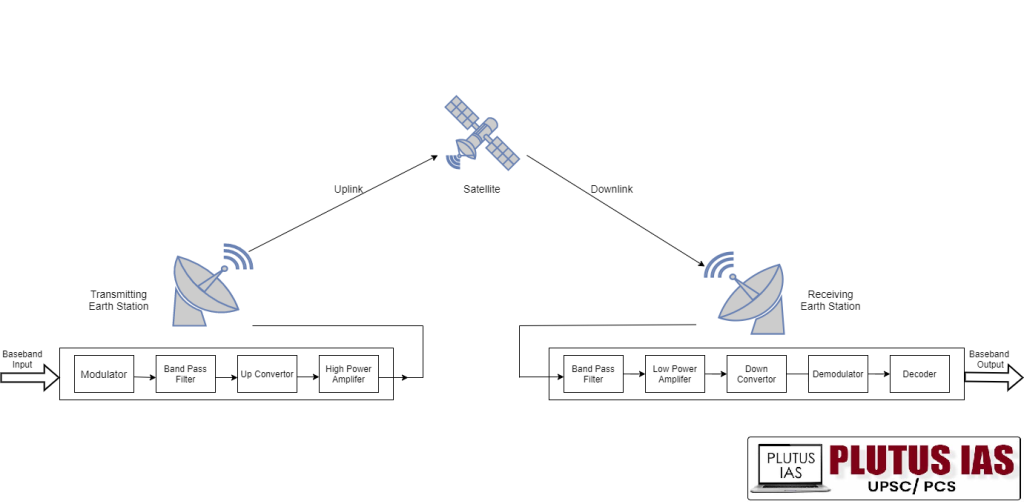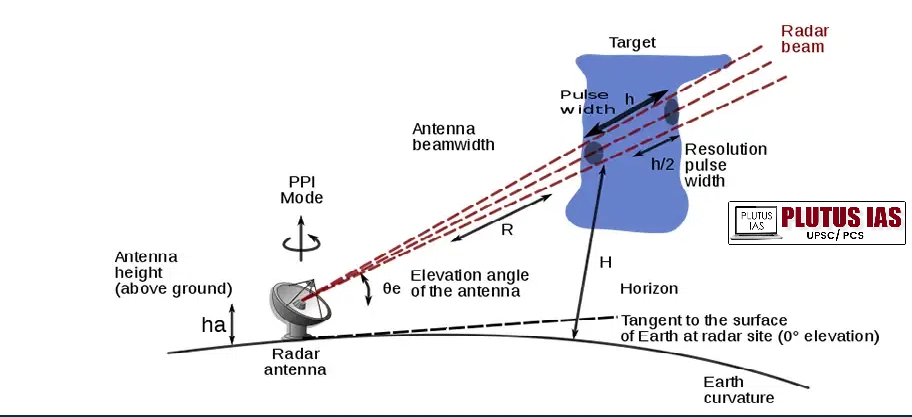29 Nov PRELIMS BIT: PM WANI,SATELLITE COMMUNICATION,RADAR SYTSTEM
SYLLABUS MAPPING:
GS-SCIENCE AND TECHNOLOGY
Why in the news?
The PM-WANI framework, or Prime Minister’s Wi-Fi Access Network Interface, is designed to speed up the spread of Internet services by establishing public Wi-Fi access points across the country. Its goal is to contribute to the development of a Digital India and bring about various associated benefits.

PRELIMS BIT: PM WANI
What is the PM WANI Scheme?
PM-WANI (Prime Minister’s Wi-Fi Access Network Interface) is an initiative launched by the Government of India aimed at providing public Wi-Fi access across the country, especially in underserved and rural areas.
How to Access PM-WANI Internet
To access the PM-WANI network, users need to download an app that shows available Wi-Fi networks. They can then choose a hotspot from the list, make a payment, and use the internet until their balance is depleted.
The PM-WANI Ecosystem
The PM-WANI ecosystem is made up of four components: the Public Data Office (PDO), the Public Data Office Aggregator (PDOA), the App Provider, and the Central Registry.
The PDO sets up Wi-Fi hotspots and provides internet access.
The PDOA handles the authorization and accounting services for PDOs.
The App Provider shows nearby available hotspots on users’ phones.
The Central Registry, managed by the Centre for Development of Telematics, maintains records of App Providers, PDOs, and PDOAs.
As of November 2022, the PM-WANI central registry lists 136 PDO aggregators, 83 app providers, and 132,529 public Wi-Fi hotspots.
Benefits of PM-WANI
The WANI Wi-Fi model can help improve internet penetration, potentially boosting the country’s gross domestic product (GDP). It also has the potential to expand internet access in rural areas, reducing the digital divide. Additionally, it could create job opportunities in small and medium-sized enterprises while providing affordable internet to underserved populations and supporting the Digital India initiative.
Facts:
1. Launch Date:
PM-WANI was launched by the Department of Telecommunications in December 2020.
2. Target Audience:
It seeks to improve internet access for rural households, the urban poor, and underserved communities.
It aims to support small and micro-entrepreneurs, creating new employment opportunities through local businesses providing internet access.
3. PM-WANI Components:
The ecosystem consists of four main parts:
Public Data Office (PDO): Establishes the Wi-Fi hotspots and provides internet access.
Public Data Office Aggregator (PDOA): Provides authorization and accounting services for PDOs.
App Providers: Apps that help users find available Wi-Fi hotspots in their vicinity.
Central Registry: Maintained by the Centre for Development of Telematics (C-DOT), it tracks details of PDOs, PDOAs, and App Providers.
4. No License or Registration Fee:
The scheme allows local businesses and establishments to offer Wi-Fi services without requiring a license or charging a registration fee, making it easier for entrepreneurs to participate.

Aims and objectives:
1. Enhance Internet Access: To improve access to affordable and high-speed internet, particularly in rural and underserved urban areas, by establishing public Wi-Fi hotspots across India.
2. Support Small Entrepreneurs: To create new business opportunities for small and micro-entrepreneurs by allowing local businesses and establishments to provide Wi-Fi services without the need for a license or registration fee.
3. Bridge the Digital Divide: To reduce the digital gap between urban and rural areas by making the internet more accessible to rural households and low-income urban communities.
4. Promote Employment: To generate employment opportunities in small and medium-sized sectors through the setup and operation of public Wi-Fi hotspots by local entrepreneurs.
5. Affordable Internet for All: To offer low-cost internet options to underserved sections of society, improving overall internet penetration in the country.
PRELIMS BIT: Satellite communication
Why in the news?
Minister of State for Communications Chandra Sekhar Pemmasani has said that Satellite Communication (Satcom) will not compete with ground-based mobile networks, but it will complement them. Addressing the 3rd edition of the Indian Space Conclave in New Delhi, the minister said Satcom should be seen as complementary to terrestrial network technologies such as 5G and 6G for achieving widespread connectivity.
What is Satellite communication?
Satellite communication involves transmitting information from one location to another using a communication satellite orbiting the Earth. For example, watching the English Premier League every weekend with friends would not be possible without this technology. A communication satellite is an artificial satellite that relays signals through a transponder, creating a communication link between a transmitter and receiver located at different points on Earth. Satellite communications are used for various purposes, including telephone, radio, television, internet, and military operations. In fact, over 2,000 artificial satellites are currently orbiting the Earth, facilitating these global communications.

Satellite communication vs traditional communication:
| Aspect | Satellite Communication | Traditional Communication |
|---|---|---|
| Coverage | Provides global coverage, including remote and rural areas. | Limited by geographic boundaries and infrastructure availability. |
| Infrastructure | Requires fewer ground-based infrastructures; satellites act as relays. | Relies heavily on ground-based infrastructure like telephone lines and cellular towers. |
| Speed of Transmission | High-speed data transmission over long distances. | Typically slower compared to satellite systems, especially in rural areas. |
| Applications | Used for TV/radio broadcasting, internet, GPS, military, weather forecasting, etc. | Used for landline phones, wired internet, and mobile communications. |
| Cost and Maintenance | Lower infrastructure cost, but satellites can be expensive to launch and maintain. | Higher setup and maintenance costs, particularly in rural or remote areas. |
| Reliability | Can face higher latency and signal loss due to space travel distance. | More reliable with low latency and stable connections, especially in urban areas. |
| Latency | Generally higher due to long-distance signals travelling to space and back. | Low latency due to direct, ground-based connections. |
| Flexibility | Highly flexible, providing service in places where traditional infrastructure is not feasible. | Less flexible, constrained by physical infrastructure. |
key features, advantages, disadvantages, and applications:
| Aspect | Satellite Communication | Traditional Communication |
|---|---|---|
| Key Features | Uses satellites in Earth’s orbit to relay signals. | Relies on physical infrastructure like cables, phone lines, and towers. |
| Provides global, wide-area coverage. | Limited to specific geographic areas (urban, suburban). | |
| Uses transponders on satellites to transmit and receive data. | Signals travel through terrestrial networks, such as landlines and cellular towers. | |
| Suitable for both one-way (broadcast) and two-way communication (data transmission). | Primarily used for voice communication and broadband internet. | |
| Advantages | Provides connectivity in remote and rural areas without requiring ground infrastructure. | – More reliable with low latency and stable connections in urban areas. |
| Can broadcast television, radio, and internet services to large areas. | Generally cheaper and easier to set up in urban areas. | |
| High capacity for data transmission. | Well-established with reliable performance and coverage. | |
| Does not require extensive ground-based infrastructure. | Low latency and high-speed communication in cities. | |
| Disadvantages | Higher latency due to long-distance travel of signals (space and back). | – Limited range, especially in rural and remote locations. |
| Expensive to launch and maintain satellites. | Requires extensive ground-based infrastructure (cables, towers). | |
| The signal may be affected by weather conditions (rain fade, etc.). | Susceptible to damage from physical interference (e.g., cable cuts). | |
| It can have lower bandwidth and slower speeds compared to terrestrial systems. | More maintenance-intensive and costly in remote or rural areas. | |
| Applications | TV/radio broadcasting, satellite internet, GPS, military communication, weather forecasting. | Landline telephony, cellular networks, wired internet (broadband). |
| Emergency communication, disaster relief, and scientific data transmission. | Voice communication, fax, and data communication in urban areas. | |
| Global communication for remote businesses, maritime, aviation, and military. | Mobile communication and Internet access in areas with good infrastructure. |
PRELIMS BIT: RADAR SYSTEM
Why in the news?
A collaboration between the Indigenous defence industry and academia has started to produce significant outcomes. The Indian Institute of Technology Kanpur (IIT-K) revealed a major advancement in stealth technology that could render combat systems such as tanks and fighter jets invisible, or nearly invisible, to enemy radar.
What is RADAR SYSTEM?
A radar system is a complex combination of a transmitter and a receiver. The transmitter generates and sends out radio waves, while the receiver detects the echoes that occur when these waves hit objects. By analyzing the delay between the transmission of the waves and the reception of the echoes, a radar system can calculate the distance, position, and speed of objects, making it a vital tool for tracking and identifying various targets.
Working Principles:
1. Transmitter Operation:
Generation: The radar generates short pulses of electromagnetic waves using a high-energy RF oscillator.
Transmission: The pulses are sent through the antenna, directing them into space.
2. Propagation through Space:
Travel: The pulses travel at the speed of light (299,792 km/s) and interact with objects in their path.
Reflection: Objects reflect part of the energy back toward the radar.
3. Echo Reception:
Radar Echoes: Reflected signals (echoes) provide information about the distance, direction, and characteristics of the target.
Reception: The antenna receives the echoes, and the radar receiver converts them into electrical signals.
4. Signal Processing:
Amplification: Signals are amplified to improve quality.
Filtering: Unwanted noise is filtered out to isolate relevant echoes.
Pulse Compression: Enhances range resolution in pulse radar systems.
Doppler Processing: Analyzes frequency shifts to measure target speed in Doppler radar.
Tracking: Algorithms track target positions over time.

Applications of RADAR SYSTEM:
1. Air and Space: Radar is employed in air traffic control, aircraft anti-collision systems, and space surveillance.
2. Marine: Radar is used for marine navigation, identifying landmarks, and monitoring ocean activity.
3. Weather: Radar plays a key role in meteorology for tracking precipitation and observing weather patterns.
4. Remote Sensing: Radar is utilized in remote sensing to study environmental changes, such as imaging polar ice caps and monitoring deforestation in rainforests.
5. Law Enforcement: Radar helps measure speed for law enforcement purposes.
6. Agriculture: Radar is used in agriculture to monitor and manage crop growth, including measuring soil moisture and assessing crop health.
7. Self-Driving Cars: Radar technology is integrated into self-driving cars for navigation and obstacle detection.
8. Military: Radar is essential in military applications, such as air-defence systems, anti-missile defence, and detecting enemy aircraft.
Download Plutus IAS Current Affairs (ENG) 29th Nov 2024
Prelims Question:
Q. With reference to the PM-WANI (Prime Minister’s Wi-Fi Access Network Interface) framework, which of the following statements is/are correct?
1. PM-WANI aims to establish public Wi-Fi access points primarily in urban areas.
2. Local businesses can provide Wi-Fi services without requiring a license or registration fee under the PM-WANI initiative.
Select the correct answer using the code given below:
A. 1 only
B. 2 only
C. Both 1 and 2
D. Neither 1 nor 2
Answer: B
Q. Which of the following statements are correct about satellite communication systems?
1. They have higher latency due to the long-distance travel of signals.
2. They are more cost-effective than terrestrial systems.
3. They are less susceptible to damage from physical interference.
Select the correct answer using the code given below:
A. 1 and 2 only
B. 2 and 3 only
C. 1 and 3 only
D. 1, 2 and 3
Answer: C
Q. With reference to radar systems, which of the following statements is/are correct?
1. Radar is employed in air traffic control and aircraft anti-collision systems.
2. Radar technology is primarily used for measuring soil moisture in agriculture.
Select the correct answer using the code given below:
A. 1 only
B. 2 only
C. Both 1 and 2
D. Neither 1 nor 2
Answer: A



No Comments